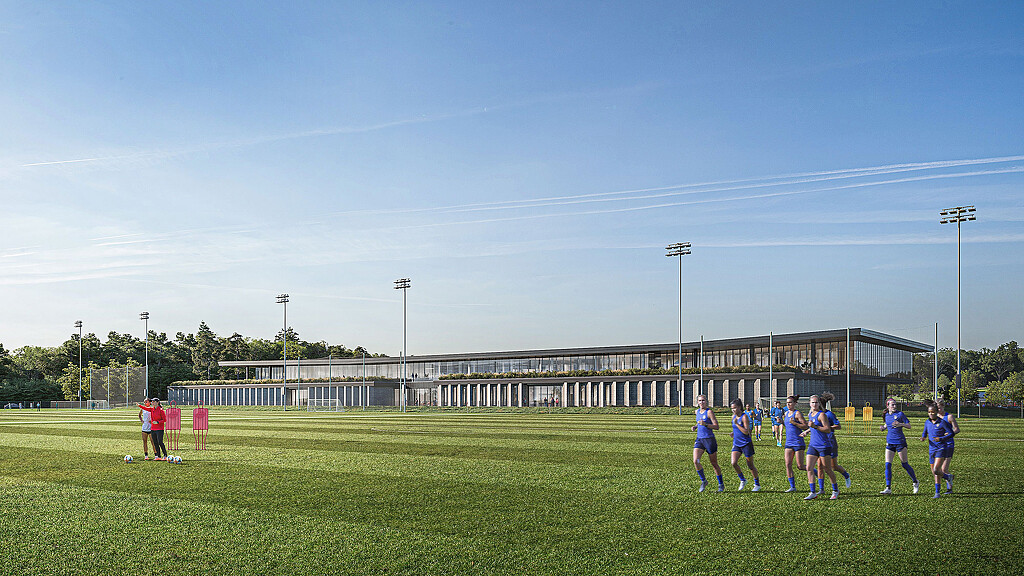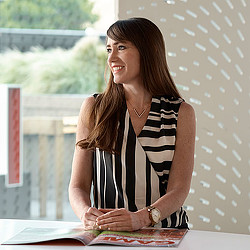The “Mental Load” and Its Effect on Athlete Performance
September 12, 2024 | By Kristin Byrd
Current trends in training facility design center on sports science, data collection, and analytics. These metrics are essential to help track and evaluate an athlete’s recent performance. However, the data does not account for life-related stressors that could impact their current and future performance and therefore, miss the root of the problem.
For female athletes who shoulder both caregiving and professional responsibilities, the “mental load,” or the cognitive and emotional work required to manage a household and career, can take a toll on their health and performance. Mental load is something that affects all of us and can cause anxiety and stress, not to mention harm to one’s physical health, if it becomes overwhelming.
Female athletes are subjected to the same mental loads as everyone else, but their job just happens to be very high profile and unfolds on the world’s stage. As architects and designers, we can help reduce their mental load by encouraging teams to include specific amenities in training facilities and give them the space and time to focus on being at the top of their game.
Drawing Lessons from the “Village” Approach
In the past, people lived in multigenerational, communal villages where support was plentiful for tasks such as childcare or preparing family meals. People worked together for the good and success of the community. Today, most people exist in a primarily isolated ecosystem and that also goes for female athletes, many of whom are recruited to teams that are far away from family or even abroad.
Living in an unfamiliar city and potentially not speaking the language are incredible stressors in and of themselves, but when you start to factor in daily tasks such as securing childcare, finding new doctors, adjusting to the local culture and community, and having to perform well at work, things can quickly spiral out of control. Another important factor is that female professional athletes often earn less than their male, seven-figure counterparts and are then unable to afford personal assistants or chefs, among other support services.
But what if the training facility can become the village of support for athletes? By thinking carefully about player needs, we can create training facilities that not only help them perform at their highest level, but also make it more convenient to care for their families.
Minimizing the Athlete’s Mental Load
The training facility can be reimagined to function as more than an athlete’s workplace. Through the programming process, we identify areas that are specifically tailored to a team or an organization.
A few examples of amenities and services to consider for performance centers or training facilities are:
Family and Personal Care- Create a space for a permanent team concierge who can help manage athletes’ personal schedules and daily tasks, such as doctors’ appointments, family activities, or helping with errands.
- Design an onsite grab-and-go grocery store or kitchen where chefs can prepare evening meals for athletes to take home to their families.
- Dedicate space for an onsite daycare center to help athletes manage childcare.
- Include areas for personal care that can include hair care and nail salons, personal laundry, and dry cleaning.
- Establish shuttle services for athletes who do not have cars or access to public transportation.
- Have multiple, reservable rooms for athletes to build their personal brand, develop media strategies, create podcasts, and take meetings with agents and sponsors.
- Include extra flex office spaces for permanent on-site advisors, such as mental health services and long-term financial planning assistance.
Clearing the Path to Performance
The path to reducing the athletes’ mental load is dependent on a few factors. First and foremost, athletes need to feel supported by their clubs and know their mental well-being is just as important as their game-time performance. Second, athletes need a commitment from team ownership that the “village” mindset benefits not just the team, but the entire organization in a holistic way. Third, designers and architects must understand the team goals and objectives early in the design process. Design teams can allocate appropriate square footages for the building program components and then evaluate total space constraints and the financial impacts before getting too far along in the process.
Mental load is often described as an unseen burden because we carry it within our mind. By identifying ways to create solutions for those stressors within the physical environment, we are giving athletes the best shot at performing at their best.
For media inquiries, email .

